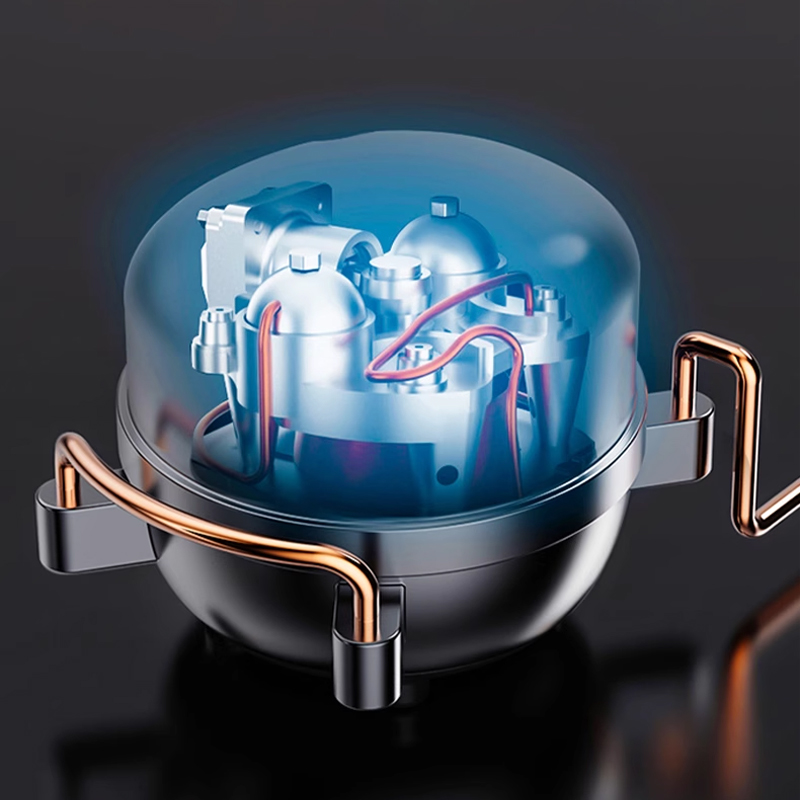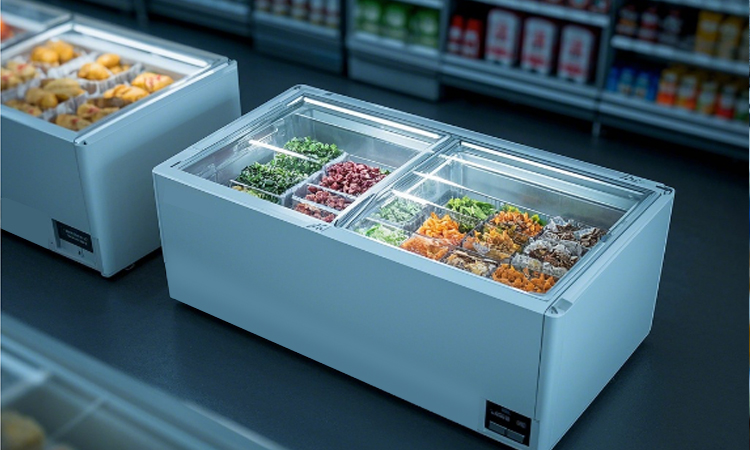
Compressors are indispensable tools and industrial equipment used across a wide range of applications, from powering pneumatic tools in workshops to managing large-scale industrial processes. The "best" compressor depends largely on its intended use, efficiency, durability, and performance under specific conditions. This article explores the top compressors in different categories, highlighting their features, advantages, and ideal applications to help users make informed decisions.

Reciprocating compressors, also known as piston compressors, use a piston-cylinder mechanism to compress air. They are valued for their high pressure capabilities and reliability in small to medium-scale operations.
One standout in this category is the Ingersoll Rand 2475N5-V. This two-stage reciprocating compressor delivers 5 horsepower and a maximum pressure of 175 PSI, making it suitable for heavy-duty tasks such as powering sanders, grinders, and paint sprayers. Its cast-iron construction ensures durability, while the oil-lubricated design reduces wear and tear on moving parts. The unit also features a large air tank (80 gallons) that provides a steady supply of compressed air, minimizing the need for frequent cycling.
Another top performer is the Quincy QT-5. Renowned for its quiet operation, this single-stage reciprocating compressor is ideal for workshops where noise levels are a concern. It offers 5 horsepower, a 60-gallon tank, and a maximum pressure of 125 PSI. The QT-5 incorporates a high-efficiency motor and a precision-balanced crankshaft, which contribute to its long service life and low maintenance requirements. Its compact design allows for easy installation in limited spaces.
Rotary screw compressors are designed for continuous operation, making them perfect for industrial settings where a constant supply of compressed air is essential. They operate by trapping air between two rotating screws and reducing its volume, resulting in high efficiency and low energy consumption.
The Atlas Copco GA 75 VSD is a leading rotary screw compressor in the industrial segment. Equipped with a variable speed drive (VSD), it adjusts its motor speed according to air demand, reducing energy usage by up to 35% compared to fixed-speed models. This 75-horsepower unit delivers a maximum pressure of 145 PSI and features an integrated dryer and filtration system, ensuring clean, dry air for sensitive applications such as food processing and pharmaceutical manufacturing. The GA 75 VSD also comes with advanced monitoring software that provides real-time data on performance and maintenance needs.
Sullair 1600H is another exceptional rotary screw compressor, favored for its ruggedness and reliability in harsh environments. With a horsepower range of 100 to 350, it can handle heavy industrial loads with ease. The 1600H uses Sullair's patented rotary screw air end, which is designed for minimal leakage and maximum efficiency. Its modular design allows for easy customization, with options for different tank sizes, dryers, and filtration systems. This compressor is widely used in mining, construction, and manufacturing industries.
Centrifugal compressors are centrifugal force to increase air pressure, making them suitable for large-scale applications requiring high volumes of compressed air. They are commonly used in power plants, chemical processing, and natural gas pipelines.
The Siemens SIMOTICS XP is a top-tier centrifugal compressor known for its high performance and energy efficiency. It offers flow rates up to 1,000,000 cubic feet per minute (CFM) and pressures up to 1,000 PSI, making it ideal for large industrial complexes. The SIMOTICS XP features a robust impeller design that minimizes aerodynamic losses, and its advanced control system allows for precise pressure regulation. It is also equipped with condition monitoring sensors that detect potential issues before they lead to downtime, ensuring continuous operation.
GE Oil & Gas PGT25+ is another centrifugal compressor that excels in high-pressure applications. Designed for the oil and gas industry, it can handle pressures up to 10,000 PSI and is capable of compressing various gases, including natural gas, hydrogen, and carbon dioxide. The PGT25+ incorporates advanced materials such as nickel-based alloys to withstand corrosive environments, and its aerodynamic design ensures high efficiency even at extreme operating conditions. This compressor is widely used in pipeline transportation and gas processing plants.
Portable compressors are essential for construction sites, roadwork, and other on-site applications where mobility is required. They are typically smaller in size and powered by gasoline or diesel engines.
The DeWalt D55146 is a popular portable compressor among contractors and DIY enthusiasts. This 4.5-horsepower unit features a 20-gallon tank and delivers a maximum pressure of 135 PSI. Its oil-free design eliminates the need for regular oil changes, reducing maintenance hassle. The D55146 is equipped with two quick-connect outlets, allowing users to power multiple tools simultaneously, such as nail guns and impact wrenches. Its compact size and built-in handle make it easy to transport around job sites.
For more heavy-duty portable applications, the Chicago Pneumatic CPS 185 is a top choice. This diesel-powered portable compressor delivers 185 CFM at 100 PSI, making it suitable for powering jackhammers, rock drills, and other large pneumatic tools. It features a fuel-efficient engine that meets emissions standards, and its rugged frame and large tires ensure durability and easy maneuverability over rough terrain. The CPS 185 also comes with a sound-attenuated canopy to reduce noise levels, making it suitable for use in residential areas.
Scroll compressors use two interleaved scrolls to compress air, offering smooth operation, low noise levels, and high efficiency. They are commonly used in HVAC systems, medical equipment, and laboratory instruments.
The Copeland Scroll ZR Series is a leading scroll compressor in the HVAC industry. Available in various sizes (from 1 to 60 tons), it delivers reliable performance in both heating and cooling applications. The ZR Series features Copeland's patented CoreSense technology, which provides diagnostic information and protects the compressor from damage due to overload, voltage fluctuations, and refrigerant leaks. Its scroll design ensures minimal vibration and noise, making it suitable for use in residential and commercial buildings where quiet operation is important.
In the medical field, the Gardner Denver Medair scroll compressor is highly regarded for its clean, oil-free air delivery. It meets strict ISO 8573-1 Class 0 standards for air quality, ensuring that no oil contaminants enter sensitive medical equipment such as ventilators, anesthesia machines, and laboratory analyzers. The Medair compressor features a compact design and quiet operation, making it suitable for use in hospitals and clinics. It also includes a built-in air dryer and filtration system to maintain air quality.
When selecting a compressor, several factors should be taken into account to ensure it meets specific needs:
1. Air Demand: Calculate the required cubic feet per minute (CFM) and pounds per square inch (PSI) based on the tools or equipment being used. Undersized compressors will struggle to keep up, while oversized units will waste energy.
2. duty Cycle: Consider how often the compressor will be used. Continuous-duty compressors (such as rotary screw models) are better for constant operation, while intermittent-duty units (like reciprocating compressors) are suitable for occasional use.
3. Power Source: Choose between electric, gasoline, or diesel-powered compressors based on availability of power and mobility requirements. Electric models are quieter and more efficient for indoor use, while gasoline/diesel units are better for outdoor or remote locations.
4. Air Quality: For applications such as food processing, pharmaceuticals, and medical equipment, oil-free compressors with filtration systems are necessary to prevent contamination.
5. Maintenance Requirements: Oil-lubricated compressors require regular oil changes, while oil-free models have lower maintenance needs but may have a shorter lifespan. Consider the long-term costs of upkeep when making a decision.
6. Noise Levels: In residential areas, workshops, or healthcare facilities, low-noise compressors (such as scroll or quiet reciprocating models) are essential to avoid disturbing occupants.
The best compressor for a particular application depends on a variety of factors, including air demand, duty cycle, power source, and air quality requirements. Reciprocating compressors like the Ingersoll Rand 2475N5-V and Quincy QT-5 excel in small to medium-scale operations, while rotary screw compressors such as the Atlas Copco GA 75 VSD and Sullair 1600H are ideal for continuous industrial use. Centrifugal compressors like the Siemens SIMOTICS XP and GE Oil & Gas PGT25+ handle large-scale, high-pressure applications, while portable models such as the DeWalt D55146 and Chicago Pneumatic CPS 185 offer mobility for on-site work. Scroll compressors like the Copeland Scroll ZR Series and Gardner Denver Medair are valued for their quiet operation and clean air delivery in HVAC and medical settings.
By carefully evaluating these options and considering the specific needs of the application, users can select a compressor that provides reliable performance, energy efficiency, and long-term value. Whether for industrial use, construction, or healthcare, the right compressor is a crucial investment that enhances productivity and ensures smooth operations.





